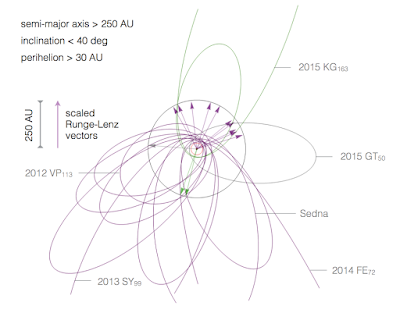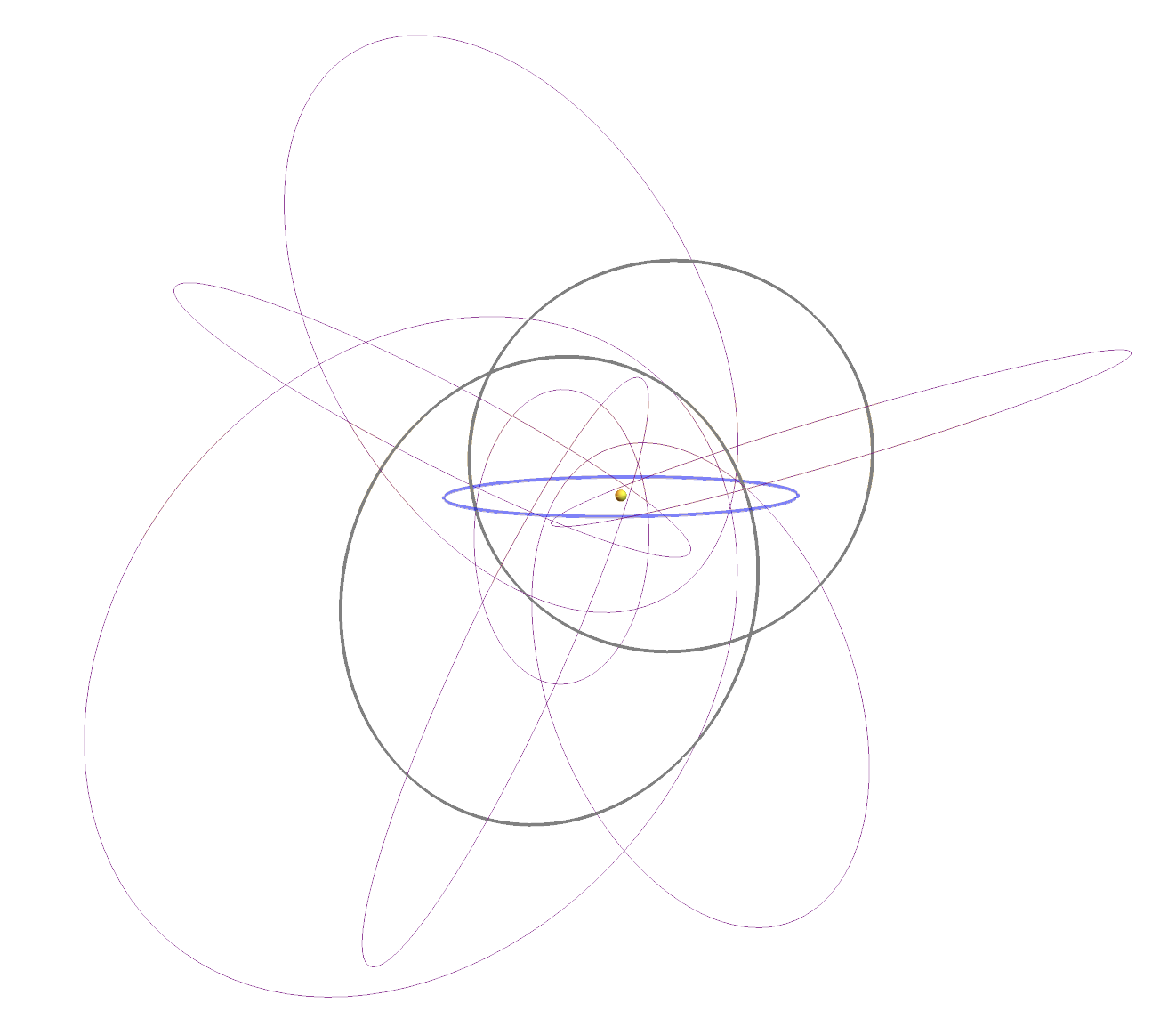UPDATE
http://www.findplanetnine.com/Friday, June 30, 2017
Status Update (Part 1)

Status Update (Part 2)
I ended the last post by pointing out that the Planet Nine hypothesis, as currently formulated, entails a theoretical solution to five seemingly-unrelated observational puzzles: (i) orbital clustering of a>250AU KBOs, (ii) dynamical detachment of KBO perihelia from Neptune, (iii) generation of perpendicular large-semi-major axis centaurs, (iv) the six-degree obliquity of the sun, and (v) pollution of the more proximate Kuiper belt by retrograde orbits. Virtually all of the discussion surrounding the new OSSOS dataset to date has focused on long-period orbits and the statistical significance of perihelion clustering beyond ~250AU - a concern relevant exclusively to point (i). Breaking with this trend, in this post I want to examine a shorter-period component of the new data, and discuss how it relates to arguably the most unexpected consequence of P9-driven evolution: generation of retrograde orbits with semi-major axes smaller than ~100AU (i.e. aforementioned point (v)).
Those of you who have been following the P9 saga for more than a year might remember the article by Chen et al. from last August, which reported the detection of Niku, a ‘rebellious’ Kuiper belt object that orbits the sun in the retrograde direction (see news coverage here and here). While the orbit of Niku itself is in some sense unremarkable (because it is acutely similar to the orbit of Drac - another retrograde object that was detected back in 2008), this discovery did successfully reinvigorate the community’s interest in the high-inclination population of the trans-Neptunian region.
Here is a look at all objects within the current dataset with inclinations greater than 60 degrees, semi-major axes in the range of 30AU to 100AU, and perihelion distance in excess of Jupiter’s orbit:
For scale, Neptune’s orbit is shown here as a blue circle, and the orbits of Niku and Drac are emphasized in gray. Generally speaking, these bodies trace out an apparently-random orbital structure and raise an important question regarding the physics of their origins, since none of them can be reproduced by conventional simulations of the solar system’s early evolution.
Unlike objects such as Sedna and 2012 VP113, Niku and Drac are currently quite close to Neptune itself, and have semi-major axes that are much too small to interact with Planet Nine directly. Nevertheless, in a paper published last October, we showed that Planet Nine naturally leads to their production. The crux of our result is that the current orbits of these bodies are very different from their primordial ones. Specifically, in our simulations we noticed that Kozai-Lidov type oscillations experienced by distant Kuiper belt objects due to Planet Nine can drive them onto highly inclined, Neptune crossing orbits. Subsequently, close encounters with Neptune shrink the orbit, freezing it onto a retrograde state. Mark Subbarao from Adler Planetarium has kindly created this visualization of one of our simulated particles, that ends up on an orbit that is almost an exact replica of Niku and Drag (grab the video here if the player below does not work):



